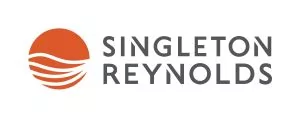- with Finance and Tax Executives and Inhouse Counsel
- in Canada
- with readers working within the Insurance, Property and Law Firm industries
Canadian news has recently been dominated by the possible imposition by the United States of substantial tariffs on Canadian goods. While recent developments have resulted in a 30-day reprieve from their imposition, tariffs remain top of mind. Perhaps nowhere is this more true than the construction industry, where numerous critical materials and components are both imported from and exported to the United States.
As a result, parties are now considering how tariffs may impact their projects and their overall businesses. Below, we review how parties can make efforts to prepare for and address the impact of tariffs.
Background
Over the past few weeks, U.S. officials – including, most prominently, President Trump – have signaled an intention to impose a 25% tariff on Canadian imports (with the possible exception of a 10% tariff on energy); including, most notably from a construction perspective, materials such as steel, aluminum, and lumber. In response, the Canadian government announced an initial round of tariffs on certain American goods, albeit primarily consumer-centric goods such as food and clothing (along with some construction materials), indicating that a subsequent round of tariffs would include items more integral to the construction industry, such as steel and aluminum products. Similarly, a number of provincial governments expressed an intention to potentially restrict or forbid American companies from participating in public procurement opportunities.
On February 3, 2025, Canada and the US arrived at an interim compromise, resulting in a "pause" to the implementation of tariffs for a 30-day period. As a result, the threat of tariffs continues to loom resulting in uncertainty in the construction industry, with no definitive resolution sight. It appears that the potential procurement restrictions may also be paused pending further developments.
Implications
Tariffs of course pose a number of issues for construction industry participants. In general terms, these include the following:
- Increased Material Costs: Imported American construction materials and equipment would be subject to tariffs, assuming that the Canadian government imposes tariffs on these types of goods, resulting in increased costs (thereby increasing the cost of the project, and potentially the prices paid by end users who use the project), and potentially disputes as to the ultimate responsibility for such costs. This affects profit margins for those who committed to fixed prices before the risk of tariffs was on the horizon;
- Supply Chain Disruptions and Project Delays: In order to avoid the impact of tariffs, parties may seek out alternative suppliers (either domestically or from outside the US). This could also result in increased costs, however, as participants compete to secure goods from a smaller pool of suppliers, and may delay projects as parties reconfigure their supply chains and potentially are forced to use replacement suppliers with longer lead times.
- Increased Disputes: Given the risk of costs rising and projects becoming delayed, parties will look to shift that risk to other project participants in order to avoid or minimize their losses. These disputes could arise in relation to a number of issues, including the following (for example):
-
- Delay claims arising from supply chain disruptions, including increased lead times;
- Breach of contract claims arising from replacement goods failing to meet project specifications (such as where the specifications require a particular product and a replacement is not accepted) or regulatory requirements; and
- Force Majeure event(s), change(s) in law, price escalation, or other contractual claims, depending on whether the contract in question contemplates tariffs as fitting within the contract's relief mechanisms, as discussed below.
As the above indicates, the possibility of tariffs presents a variety of risks to construction projects and construction industry participants. Given these factors, it could affect the risk analysis for projects in the planning stages for private and public owners, potentially having a chilling effect. It is possible, if not likely, that many forms of construction contracts will not expressly address the allocation of risk in relation to the imposition of tariffs by a foreign government and Canadian tariffs which creates increased risks of disputes. For contractors and suppliers who face the supply and price uncertainty outlined above, the bidding process can become very difficult. More generally, insolvency risk may increase across the industry.
As a result, it is critical for parties to consider what steps they can take, both in relation to current projects and future ones, in order to protect against the potential consequences of tariffs.
Analysis
With respect to existing projects, certain provisions will be of obvious interest to all parties. These include the following:
Force Majeure Clauses: A force majeure clause typically covers certain enumerated events (e.g., natural disasters, war). In some circumstances, such provisions may include certain forms of government actions, and depending on the form of contract, may include a residual category capturing any other circumstances beyond the control of either party, although the scope of such clauses will very much depend on the precise wording used.
- Price Escalation/Adjustment Clauses: Price escalation clauses have been used more frequently since the onset of the COVID pandemic. Such clause typically allows for adjustments to the contract price if material costs increase or decrease due to certain factors that are beyond the control of the parties (which might include tariffs, depending on the contract). However, it is not uncommon for contracts to exclude price escalation as a result of certain defined factors such as currency fluctuation. Parties may choose to use other mechanisms, such as hedging, to account for such risk(s).
- Change in Law Clauses: Certain contracts – particularly on larger projects – provide for adjustment in circumstances where a change in law occurs following the execution of the contract. The critical interpretive question in respect of such a clause is what constitutes a "law" as that term is defined in the contract. The applicability of such clauses is generally confined to very specific circumstances.
If tariffs are ultimately applied between Canada and the US, we expect that the above clauses will feature in negotiations and disputes amongst project participants, although these clauses will by no means be the only relevant clauses.
Looking forward to future projects, there are similarly a number of outstanding questions, as well as possibilities for how to allocate and avoid risk. Broadly speaking, parties will turn their minds towards what type(s) of project delivery models best suit their risk tolerance level in the face of an challenging economic landscape.
Parties will want to take a comprehensive approach to assessing risk on future projects, given the number of issues that might arise. For example, parties may wish to consider (in addition to the issues noted above) the following:
Pre-Emptive Supply Chain Diversification: With the specter of tariffs looming, we expect that many parties will – to the extent they have not already – diversify their supply chains where possible in order to pre-emptively mitigate the impact of tariffs on obtaining supplies from American suppliers. Ironically, and as noted above, this will likely increase the cost of alternative supply chains, although to the extent such prices can be locked in prior to bidding on or executing a contract, greater price certainty will be achieved.
- Pricing Holds: As readers will appreciate, it is not uncommon for subcontractors and suppliers to indicate that a price quote is valid for a fixed amount of time, following which the price may be revised. Parties will therefore want to consider what amount of time strikes the appropriate balance of risk between the parties.
- Storage: Parties may wish to consider making advanced purchases of materials prior to the potential imposition of tariffs, and seeking an agreement with other project participants as to the cost of the materials and storage.
- Contingencies: Given the indeterminate risk posed by tariffs, some owners and contractors may be inclined to price that risk into the contingency line item of the project budget in order to provide some measure of financial buffer. Arriving at an appropriate contingency will be a challenging exercise insofar as it will require forecasting widespread pricing impacts.
- Project Specifications and Material Substitutions: As noted above, contract specifications sometimes require the use of a specific product (or brand of product). While tariffs would not result in the impossibility of obtaining such materials, they could result in the cost of such a specified product becoming prohibitively expensive. As a result, parties may place a greater focus on flexibility in material substitutions in circumstances where the specified product has become the subject of tariffs.
This is by no means an exhaustive list of issues for consideration, given that tariffs impact the entire economic system above and beyond the construction industry. Our focus above is on Canadian construction projects, but of course Canadian contractors and suppliers who participate in American construction projects would also be significantly affected by the imposition of tariffs and may choose to take proactive steps.
Conclusion
This time of uncertainty can be likened to the early COVID era, where the repercussions for pricing and supply chains were unclear. The possibility of tariffs requires construction industry participants to conduct a comprehensive analysis of their businesses in order to insulate themselves from or mitigate, to the extent possible, the impact of tariffs. Given that Canada and the US achieved at least a 30-day reprieve, parties would be well advised to begin reviewing and planning for the risks associated with the imposition of tariffs (and potential procurement restrictions).
The content of this article is intended to provide a general guide to the subject matter. Specialist advice should be sought about your specific circumstances.





